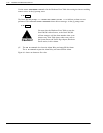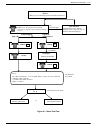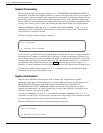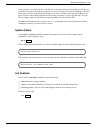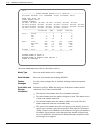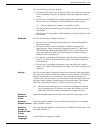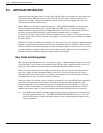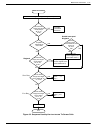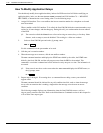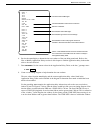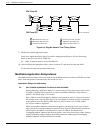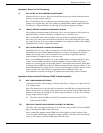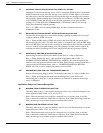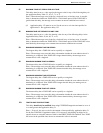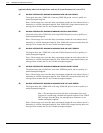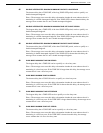
6-48 Installation and Maintenance Volume
Octel 200/300 S.4.1 PB60019−01
How To Modify Application Delays
You should only modify those application-delay indexes for PBX tones that fail. Before modifying an
application-delay index, use the PRT (PRINT TONE) command and COS Attribute 70 — MEASURE
PBX TONES, to determine the correct timing value. Use the following steps:
1. Assign COS Attribute 70 to a test mailbox that has an extension number for a telephone set located
near the terminal.
When a mailbox with COS Attribute 70 is called, the Octel 200/300 dials the extension number, stays
on line for 10 tone changes, and then hangs up. During this call, you can determine the tone cadence
of the PBX.
. The extension called should not be set to forward on ring-no-answer, busy, or fast busy. Other
features, such as camp-on, must be disabled. This could give a false tone cadence.
2. Select an Octel 200/300 port and at the @ prompt, enter:
PRT x
Enter
For this command, x is the port number to be used.
3. Call that port’s extension number.
4. When the message server answers, dial the test mailbox number.
The PRT command monitors and displays the DTMF tones dialed by the caller, the DTMF tones
dialed by the Octel 200/300, and the call-progress tones from the PBX to the terminal. This
command is a real-time command and can be initiated on only one port at a time. The information is
not stored.
. If the tones do not show on the screen when the PRT command displays the DTMF events, at
the @ prompt, enter:
CS
Enter
5. Repeat steps 2 through 4. If executing the CScommand does not help, contact your technical
support center.
The PRT command should be initiated for any call condition that fails, such as when the message
server calls an extension that is sending a ringback but the message server detects an answer
condition.
The following example displays tone information when the Octel 200/300 screens a call to a
ring-no-answer extension that fails. Refer to the Miscellaneous Commands section in this chapter for
a list of Print Tone output types.



